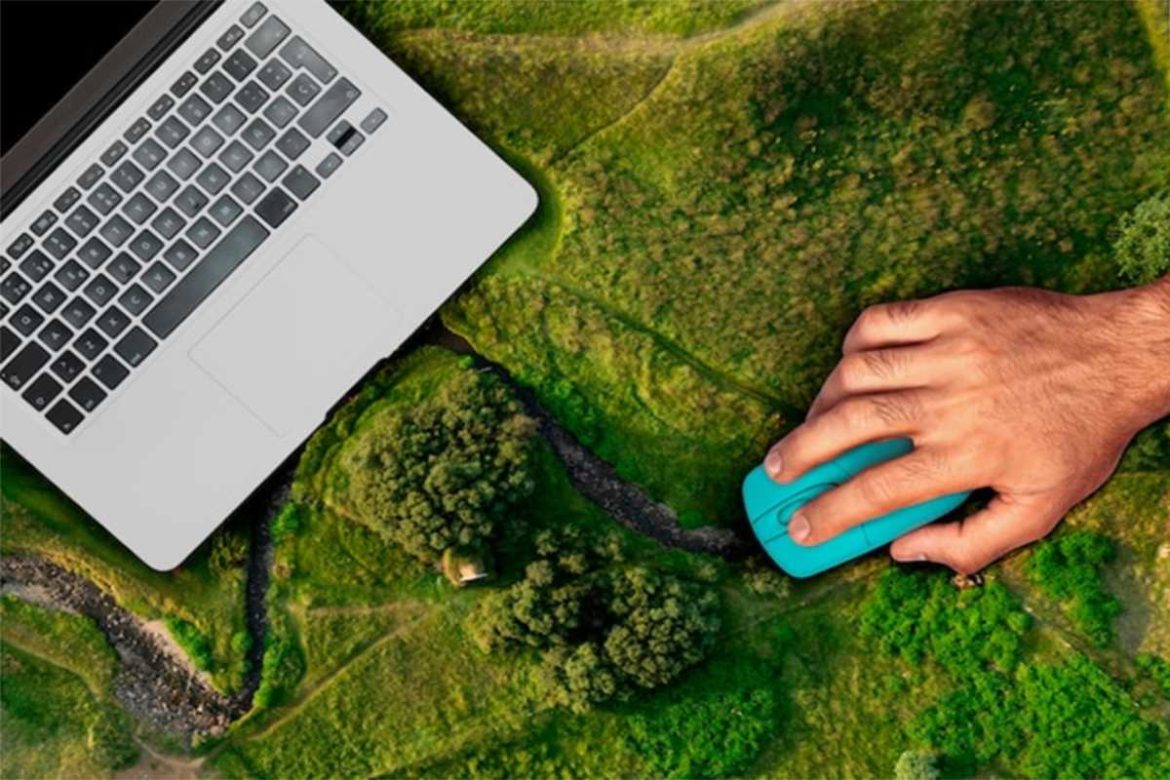The Role of Technology in Environmental Conservation – The urgency of environmental conservation has never been more pressing. With climate change accelerating and biodiversity dwindling, the need for innovative solutions is critical. The World Wildlife Fund reports that we have lost 60% of the world’s wildlife populations in just over four decades. This stark statistic underscores the dire state of our planet and sets the stage for exploring how technology can help address these urgent challenges.
Technology offers a beacon of hope in this bleak scenario. From monitoring deforestation to predicting natural disasters, technological advancements are proving to be invaluable tools in the fight for environmental conservation. These innovations not only provide us with the data needed to understand the extent of environmental degradation but also offer practical solutions to mitigate its impact.
As we delve into the various ways technology is being harnessed for environmental conservation, it becomes clear that the integration of science and technology is not just beneficial but essential. The following sections will explore specific technologies and their applications, demonstrating how they are making a tangible difference in preserving our planet.
Table of Contents
Remote Sensing and Satellite Imagery
Remote sensing and satellite imagery have revolutionised the way we monitor and protect natural resources. These technologies provide a bird’s-eye view of the Earth, allowing us to track changes in the environment with unprecedented accuracy. For instance, satellite imagery has been instrumental in monitoring deforestation in the Amazon, providing real-time data that helps authorities take swift action against illegal logging activities.
In addition to tracking deforestation, remote sensing is also crucial for monitoring polar ice caps. As climate change continues to cause polar ice to melt at alarming rates, satellite imagery provides critical data on ice thickness and extent. This information is vital for understanding the impact of global warming on sea levels and for developing strategies to mitigate its effects.
Moreover, remote sensing technologies are being used to monitor other natural resources, such as water bodies and agricultural lands. By providing detailed images and data, these technologies enable better management and conservation of these resources. The ability to monitor large areas remotely and in real-time is a game-changer for environmental conservation efforts.
Artificial Intelligence in Conservation
Artificial intelligence(AI) & machine learning are transforming the field of environmental conservation. These technologies are being used to predict and prevent environmental disasters, such as forest fires. By analysing huge amounts of data, AI can identify patterns and predict where and when fires are likely to occur, allowing for timely interventions that can save lives and protect ecosystems.
AI is also being used for species identification and monitoring. Machine learning algorithms can analyse images and sounds to identify different species, even in remote and inaccessible areas. This capability is particularly useful for tracking endangered species and monitoring their populations. For example, AI-driven cameras and sensors are being used to monitor wildlife in Africa, providing valuable data that helps conservationists protect these animals from poaching and habitat loss.
Furthermore, AI & machine learning are being applied to environmental data analysis, helping researchers understand complex ecological systems and develop more effective conservation strategies. By processing and analysing large datasets, these technologies can uncover insights that would be impossible to obtain through traditional methods. The potential of AI and ML in environmental conservation is vast and still largely untapped. As Kenyan Information, Communication and Digital Economy Minister Eliud Owalo stated, “What will enable African countries to remain relevant in the digital marketplace will be our level of creativity and innovation, strategic agility and maneuverability in the digital space.”
Drones in Environmental Monitoring
Drones are becoming increasingly popular tools for environmental monitoring and conservation. These unmanned aerial vehicles can cover huge areas quickly and provide high-resolution images and data. In Africa, drones are being used in anti-poaching efforts, allowing rangers to monitor vast wildlife reserves and respond rapidly to poaching incidents. This technology has significantly enhanced the effectiveness of anti-poaching operations and has helped protect endangered species.
In the Amazon, drones are being used for habitat mapping and monitoring. They can fly over dense forests and capture detailed images that help researchers understand the health of the ecosystem. This information is crucial for developing conservation strategies and for monitoring the impact of human activities on the environment. Drones are also being used to monitor reforestation efforts, providing data on tree growth and survival rates.
Beyond wildlife monitoring, drones are being used for a variety of other environmental applications. They can be equipped with sensors to measure air and water quality, monitor agricultural lands, and even assist in disaster response efforts. The versatility and accessibility of drone technology make it a valuable tool for environmental conservation.

Marine Conservation Technologies
The oceans are facing numerous threats, from overfishing to pollution to climate change. Fortunately, technological advancements are helping to protect marine ecosystems. Underwater drones, for example, are being used to monitor coral reefs and track marine species. These drones can capture high-resolution images & videos, providing valued data on the health of coral reefs and the behaviour of marine animals.
Acoustic monitoring is another important technology for marine conservation. By using underwater microphones, researchers can listen to the sounds of the ocean and monitor the presence of different species. This technology is particularly useful for tracking marine mammals, such as whales and dolphins, and for studying their behaviour and communication. Acoustic monitoring can also help detect illegal fishing activities and other threats to marine life.
Innovations in marine conservation technologies are not limited to drones and acoustic monitoring. Other advancements, such as satellite tracking of marine species and the use of artificial intelligence for data analysis, are also making significant contributions. These technologies are providing new insights into the health of our oceans and helping to develop more effective conservation strategies.
The Conflict Island Conservation Initiative
The Conflict Island Conservation Initiative (CICI) is a prime example of how technology is being used for marine conservation. Located in Papua New Guinea, the initiative focuses on protecting the unique marine biodiversity of the Conflict Islands. Sandrina Postorino, a passionate environmentalist and corporate strategist, has been actively involved in CICI, contributing her expertise to the initiative’s conservation efforts.
CICI employs a range of technologies to monitor and protect the marine environment. Drones are used to survey coral reefs and locate manta rays, providing valuable data on the health of the ecosystem. Temperature monitoring is also employed to study how different coral species react to rising temperatures and detect any threats to their habitat. These technologies enable CICI to develop targeted conservation strategies and take timely action to protect the marine environment.
In addition to technological innovations, CICI also focuses on community engagement and education. By involving local communities in conservation efforts and raising awareness about the importance of marine biodiversity, CICI is fostering a sense of stewardship and responsibility. The initiative’s holistic approach, combining technology with community involvement, is making a significant impact on marine conservation in the Conflict Islands.
Geospatial Technologies
Geospatial technologies are playing a crucial role in environmental monitoring and conservation. These technologies, which include geographic information systems (GIS) and remote sensing, allow researchers to map and analyse spatial data. Rebecca Moore, the director of Google Earth and founder of Google Earth Outreach and Google Earth Engine, has been at the forefront of using geospatial technologies for environmental conservation.
Google Earth Engine, for example, is a cloud-based platform that enables researchers to analyse vast amounts of satellite data. This platform has been used for a variety of environmental applications, from monitoring deforestation to tracking the impact of climate change. By providing access to high-resolution satellite imagery and powerful data analysis tools, Google Earth Engine is helping researchers gain new insights into environmental issues and develop more effective conservation strategies.
In addition to Google Earth Engine, other geospatial technologies are also making significant contributions to environmental conservation. GIS, for example, is being used to map and analyse the distribution of species, monitor changes in land use, and assess the impact of human activities on the environment. These technologies provide valuable data that can inform conservation planning and decision-making, helping to protect our planet’s natural resources.
Biotechnology in Conservation
Biotechnology is another field that is making significant contributions to environmental conservation. Genetic engineering, for example, is being used to preserve endangered species. By manipulating the genes of these species, scientists can enhance their resilience to diseases and environmental stressors, increasing their chances of survival. This technology has the potential to save species that are on the brink of extinction and to restore biodiversity in degraded ecosystems.
Bioinformatics is also playing a crucial role in conservation biology. By analysing genetic data, researchers can gain insights into the genetic diversity of species and populations. This information is vital for developing effective conservation strategies and for monitoring the health of ecosystems. Bioinformatics tools are being used to study a wide range of species, from plants to animals, and to understand their genetic makeup and evolutionary history.
In addition to genetic engineering and bioinformatics, other biotechnological innovations are also being applied to environmental conservation. For example, bioremediation, which uses microorganisms to clean up polluted environments, is being used to restore contaminated soils and water bodies. These technologies are providing new solutions to some of the most pressing environmental challenges and are helping to create a more sustainable future.
Renewable Energy Technologies
Renewable energy technologies are playing a crucial role in reducing the environmental impact of human activities. Advancements in solar and wind energy, for example, are providing clean and sustainable alternatives to fossil fuels. These technologies are not only reducing greenhouse gas emissions but also helping to conserve natural resources and protect ecosystems.
Solar energy, in particular, has seen significant advancements in recent years. Innovations in solar panel technology have increased their efficiency and reduced their cost, making solar energy more accessible and affordable. Solar panels are being used in a variety of applications, from powering homes and businesses to providing electricity in remote and off-grid areas. These advancements are helping to reduce our reliance on fossil fuels and to promote sustainable energy solutions.
Wind energy is another area where technological innovations are making a significant impact. Advances in wind turbine design and materials have increased their efficiency and durability, making wind energy a viable option for large-scale power generation. Wind farms are being established in several parts of the world, providing clean and renewable energy to millions of people. These innovations are serving to drive the transition to a more sustainable energy future.
Embracing a Technological Future for Conservation
As we look to the future, the role of technology in environmental conservation will only continue to grow. The integration of cutting-edge technologies with traditional conservation methods is creating new opportunities for protecting our planet. Doug Hilton, the Chief Executive of CSIRO, has been a strong advocate for leveraging science and technology for environmental sustainability. His work at CSIRO is helping to drive technological advancements that can be applied to conservation efforts.
The potential of technology to address environmental challenges is immense. From monitoring and protecting natural resources to developing sustainable energy solutions, technological innovations are providing new tools and strategies for conservation. By embracing these technologies and integrating them into conservation efforts, we can make significant progress in protecting our planet for future generations.
However, the success of these efforts will depend on collaboration and commitment from all sectors of society. Governments, businesses, researchers, and communities must work together to develop and implement effective conservation strategies. By supporting and engaging in conservation efforts, we can all play a role in creating a more sustainable future.


